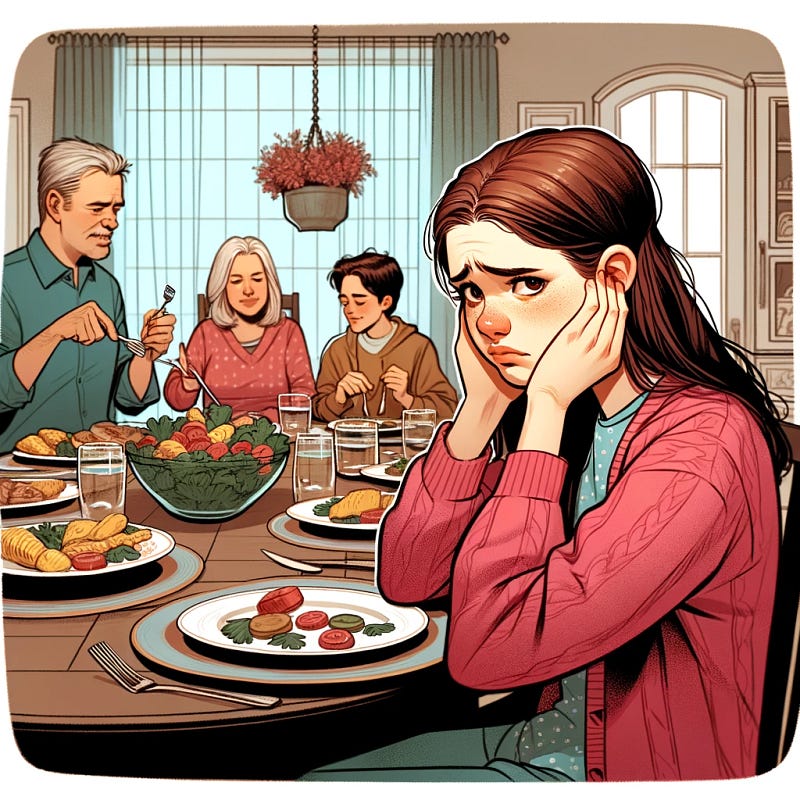Misophonia: The Hidden Struggle with Everyday Sounds
Written on
Chapter 1: Understanding Misophonia
In the often-overlooked world of misophonia, a teenage girl from Bahrain lives a seemingly ordinary life with her parents. However, one day, she finds herself overwhelmed by the sounds of her family eating. The crunching of apples and nuts becomes unbearable, sounding like thunderclaps in her ears. This auditory sensitivity disrupts her daily routine, pushing her to avoid family meals and retreat to her room.
As her anxiety escalates, she becomes increasingly irritable, even lashing out at classmates who dare to snack nearby. This cycle leads to social isolation, intensifying her emotional distress. The mere anticipation of these triggering sounds fills her with dread, resulting in depressive episodes and suicidal thoughts. What began as minor irritations spiraled into a pervasive nightmare, affecting every facet of her existence. No one should have to endure such torment.
Section 1.1: The Nature of Misophonia
The teenage girl is grappling with a neurological condition known as misophonia. This disorder elicits extreme reactions to specific sounds, such as chewing, pen clicking, or even distant train noises. Whenever these sounds are encountered, individuals may experience anxiety, distress, and anger, often starting in childhood. Interestingly, triggers can also include specific movements, like finger tapping.
Research indicates that approximately one in five individuals may experience misophonia, so if you find yourself irritated by certain sounds, you're not alone. Mild cases involve manageable discomfort, while severe instances can provoke intense anger, anxiety, or even panic attacks triggered by commonplace noises like breathing or eating.
Subsection 1.1.1: The Link to Other Disorders

Misophonia frequently coexists with other conditions, such as Tourette syndrome and obsessive-compulsive disorder, sharing symptoms like sensory hypersensitivity and heightened emotional responses. It's crucial to be mindful of the sounds we make around individuals who may be affected.
Section 1.2: Treatment Options
In the case of our teenage protagonist, she underwent various treatments, including multiple antidepressants—starting with Escitalopram, then Mirtazapine, and finally Fluoxetine—alongside psychotherapy. Despite these efforts, she continued to face challenges with misophonia and depressive symptoms.
However, she discovered coping mechanisms, such as using earplugs, headphones, and music to alleviate her symptoms. Through increased self-awareness and distraction techniques, she gradually learned to tolerate triggering sounds, significantly decreasing the severity of her misophonia. While her condition remains, her symptoms have improved considerably.
Chapter 2: Seeking Solutions
Currently, there is no definitive cure for misophonia. Nevertheless, some individuals find relief through medication and therapies like tinnitus retraining and cognitive-behavioral therapy (CBT):
- Tinnitus Retraining Therapy: This approach aims to desensitize individuals to triggering sounds by combining sound therapy with counseling, gradually reducing negative associations.
- Cognitive-Behavioral Therapy: CBT focuses on altering the thoughts and behaviors linked to misophonia, teaching coping strategies such as relaxation techniques, cognitive restructuring, and exposure therapy. This can help individuals regain control over their reactions.
While these treatments may alleviate symptoms, their effectiveness can vary based on individual circumstances and the severity of the disorder.
Misophonia is a genuine condition that affects many, often extending beyond mere annoyance with certain sounds. While you might find yourself irritated by loud chewing, this response can profoundly impact an individual's life. Until more effective treatments are discovered, let’s be conscious of the sounds we create and, for those affected, consider investing in noise-canceling headphones as a starting point.
This is a noise we cannot afford to overlook.
Want to delve deeper into the fascinating world of sound? Join my newsletter, which boasts over 270 subscribers, to explore how sound influences our lives, from psychological effects to innovative sound technologies.